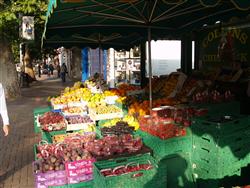
A course for people working, or intending to work, in orchards or market gardens
This course is similar to other VHT002 horticulture certificates in its introductory (core) units, but devotes 50% of the course to topics specifically related to crop production. The Core Units are divided into the following sections:
1. Introduction to Plants -Taxonomy, plant families, pressing plants, basic botany.
2. Plant Culture -Planting, potting, plant selection, pruning, irrigation, tools and machinery.
3. Soils and Nutrition -Soil structure, chemistry, nutrition, potting media.
4. Plant Identification and Use -Seed harvesting and storage, germination treatments, cuttings, etc.
5. Pests, Diseases and Weeds -Identification and treatment (chemical and non-chemical)